Written by Pranjali Hardikar and Ashwini Maslekar
Every one of us, at least once in our life, has complained that the quality of education in government schools is poor. The data only confirms this, as ASER reports have time and again established that our children aren’t learning well. Now, the entire burden of improving these standards falls on the already strained shoulders of government school teachers. While much can be improved in the profession, how many of us are aware of the existing efforts of teachers and the government to provide quality education at scale?
The National Council for Educational Research and Training (NCERT) of India, for example, recommends an in-service teacher development model that focuses on the Continuous Professional Development (CPD) of existing teachers. Among the various ways in which the in-service model is carried out, one method that stands out is the teacher-mentor model.
“Mentor teachers must play an important role in taking Happiness program ahead!”
Hon. Deputy CM @msisodia addressing 160 mentor teachers of Delhi Govt schools on Day 1 of two day intense training program of ‘Happiness Curriculum’
Proud Mentor Teacher#DelhiEducationRevolution pic.twitter.com/YYflqumApe
— Manu Gulati (@ManuGulati11) December 10, 2018
A teacher mentor is a guide for school teachers to support their professional growth, by providing training, observations, and feedback. There exists a formal post of a ‘Cluster Head’ for Zilla Parishad (ZP) schools across the country whose responsibilities are similar to that of a teacher mentor. In 2016, the Delhi Government launched a Mentor-Teacher program and selected about 200 teacher mentors to improve the quality of teachers in Delhi’s schools. This program has resulted in nationwide conversations about the efficacy of a teacher mentor model.
How are teacher mentors evaluated?
Leadership for Equity (LFE) works extensively with the Maharashtra state government to build an effective teacher development model enabled by teacher mentors. There are about 59 lakh students enrolled in Maharashtra’s government schools, who are taught by around 2.5 lakh teachers (MSCERT, 2017). A majority of the teacher support structures in the state are monitored by the State Council for Educational Research and Training (SCERT) and the District Institute of Education and Training (DIETs). Like Cluster Heads in ZP schools, a similar approach is adopted in Pune Municipal Corporation (PMC) schools, where teachers are guided by Sahyogis (mentors) for the teacher’s professional development.
Yet, while the teacher mentor model is clearly taking different shapes, there exist no evaluation criteria in the Indian context to guide the work of teacher mentors for their own professional development.
To fill this gap, LFE carried out extensive research to understand the existing practices and frameworks of the professional development of teacher mentors both in India and globally too. Based on the study, we’ve mapped out four criteria with which teacher mentors’ professional development can be evaluated. These categories are ones that we found to be the most practical, relevant, and feasible to measure.
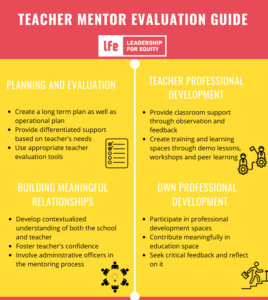
No. 1: Planning and Evaluation Skills
Just like how teachers are required to create lesson plans, planning for the evaluation of teachers is the first and most important skill for teacher-mentors. The British Council’s CPD framework mentions planning for the self and for the team as a key aspect for moderating teacher learning. Smita Dharurkar, a Sahyogi from PMC, says “keeping a register of all the observation notes and feedback I gave to teachers has helped me keep a track of my inputs, and at the same, time keeps the teacher and me accountable to mutually decided next steps.” Her next aim is to create an evaluation tool that she can use with her team of teachers to gauge their teaching progress specific to their grades.
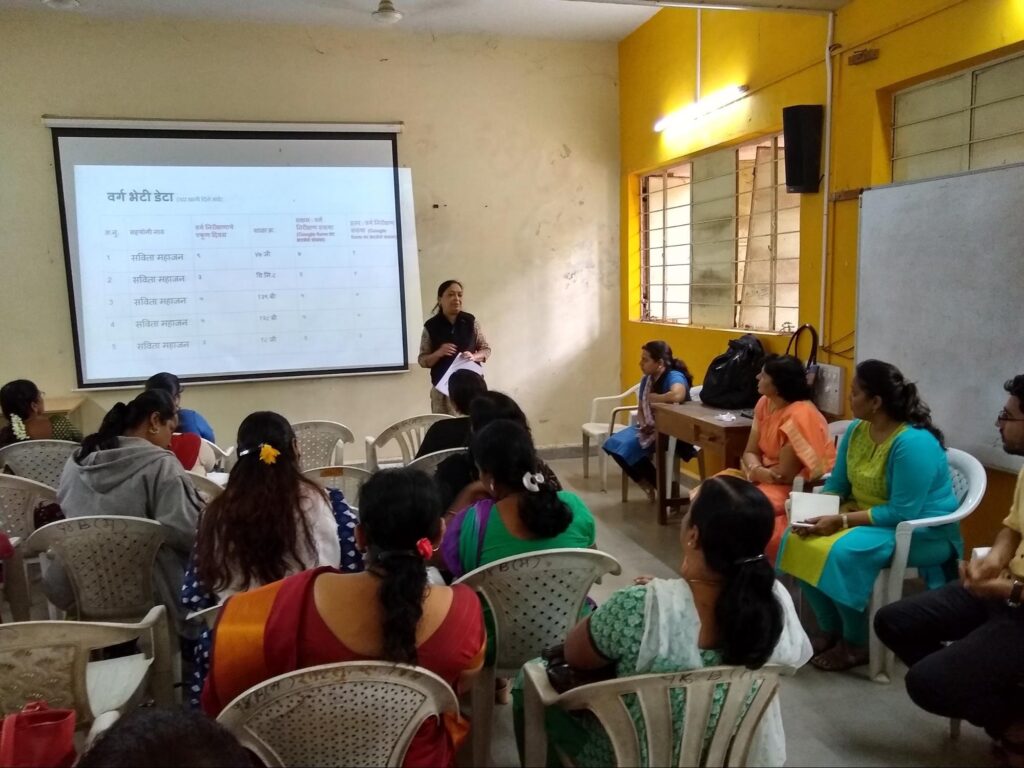
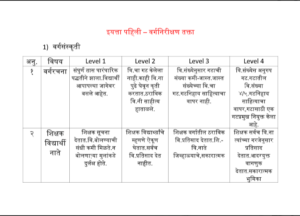
No. 2: Teacher Professional Development
The two most prevalent types of support provided by mentors to teachers are in-classroom support and creating learning spaces.
About 84% of LFE’s survey respondents cited carrying out classroom observations and having an observation debrief with the teacher as the key role of a teacher mentor. One of the respondents even stated that it is the role of a teacher mentor to make teacher self sufficient.
The Cambridge English Trainer framework too states that observing teachers should be an integral part of their role. The consistency of classroom observation backed by evidence-based note-taking helps mentors provide constructive feedback to the teachers during debriefs. These conversations are spaces where mentors give feedback, encourage self-reflection, and provide clear next steps.
The other aspect of teacher development is creating learning spaces for teachers which may or may not be limited to face-to-face training. For instance, the Regional Academic Authority of Aurangabad has been running a Massive Online Open Course (MOOC) for English teachers, incorporated into the teacher mentor model too. The mentors orient the teachers regarding the MOOC, support them as they consume the online modules, and motivate them to remain on track. Such training spaces give the opportunity to the mentors to replicate effective practices.
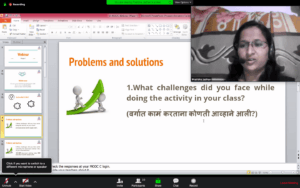
No. 3: Building Relationships
Thomas R. Guskey (1986), one of the early pioneers in the space of teacher development, mentions that motivation is a key value that drives teachers. Tom Ganser (1995) states that the responsibility of teacher mentors is to provide emotional support to teachers [1]. Even LFE’s survey responses highlighted open communication, trust, and accountability between teacher and mentor as the major themes for evaluating mentors. The thread that combines all these aspects is the ability of teacher mentors to build strong trusting relationships with teachers and administrative officers.
This includes being empathetic to the teacher’s context, celebrating their work, encouraging a teacher’s good practices, keeping the confidentiality of communication, and creating an inclusive growth environment.
But combining all these skills is easier said than done. Take the example of Seema Mahadik*, a teacher mentor for the schools in Pune’s Kothrud cluster. Over five years she faced explicit and masked backlash for pointing out development areas in classrooms and pushing for accountability. However, today, not only is her feedback accepted by the teachers but also actively sought and is trusted by the administrative officer. This became possible because she ensured that her plans and intentions were openly communicated with all her stakeholders. As they began to trust her, she became more of a confidant who heard out teachers’ issues. At the same time also pushed for accountability from her teachers by setting an example for excellence herself in front of them.
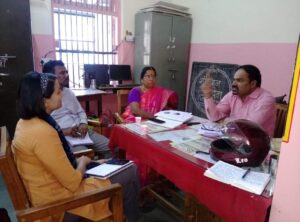
No. 4: Own Professional Development
To be relevant and provide sustained support to the teachers, the mentors need to be clear on their role and responsibilities, and be well informed of the current developments in the teaching-learning practices. This will be built when they take ownership of their own professional development (OPD). The British Council’s CPD framework lists own professional development in the top ten professional practices of a teacher educator.
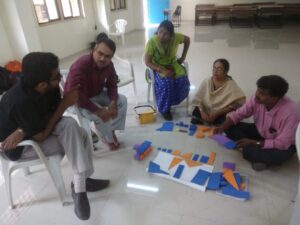
Peer learning sessions, where mentors demonstrate or practice skills in front of their peers are one of the most effective platforms to further OPD. Sahyogis participate in such sessions frequently and find it to be a safe, trusting environment to hone their skills. As one Sahyogi said, “Through these sessions I get to discuss concepts together with my peers and learn new perspectives.” Some of the other ways through which mentors can develop their professional skills are through participating in the available PD training/workshops, researching on andragogy/pedagogy, and seeking feedback on their work.
Making Teachers Great Again
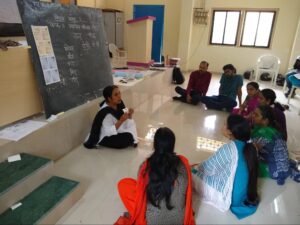
While working with teacher mentors in Maharashtra, we observed that the acceptance of their role in the system increased with the growth in their knowledge and mentoring skills. During a routine feedback conversation with the teachers in Pune, one teacher said, “I feel motivated to do additional research using Google and to try new things in the classroom. My Sahyogi showed us a lot of academic videos during the monthly training and also on our WhatsApp group. I feel appreciated for my work in the class.” So, by focusing on the capacity development of teacher mentors we can expect tremendous benefits for the teachers in the long run. It is our belief that as soon as government teachers get the requisite support they need, they will leave no stones unturned in improving the quality education provided in government schools.
Featured image courtesy of Leadership for Equity. | Names changed.
[1] Ganser, T. (1995). Principles for Teacher Mentor Selection. The Clearing House, 68(5). pp. 307-309.







[…] such as health insurance and provident funds? Will the system recognise and provide teachers with official resources to plan and prepare for their teaching, to help them reflect on what works and what can be changed? Will they be supported and enabled to […]
[…] You May Also Like: Who Teaches the Teachers? Developing teacher mentors for quality education […]
Good to read the article and approaches been made for CPD. Good intervention.
Very well analysed. There is a strong need for building a competent cadre of teacher mentors to sustain the efforts aimed at improvement of learning outcomes